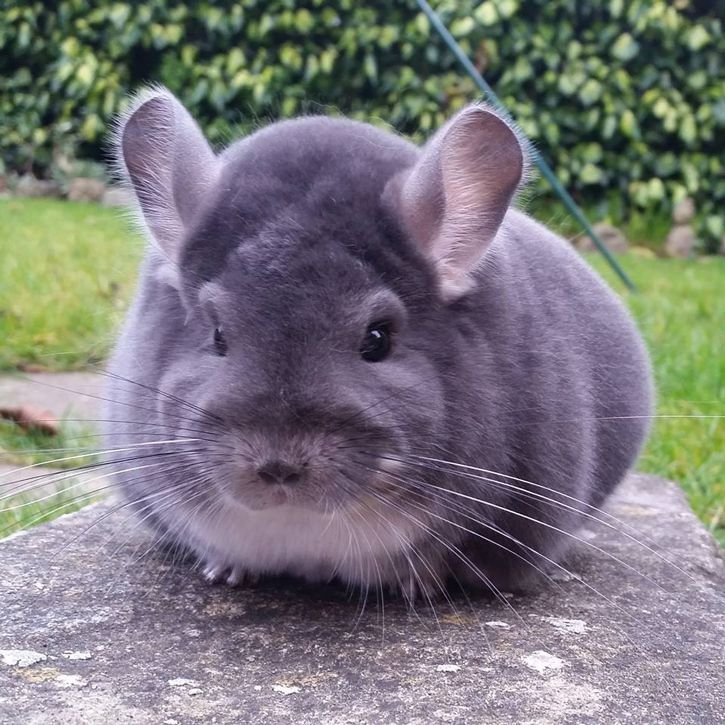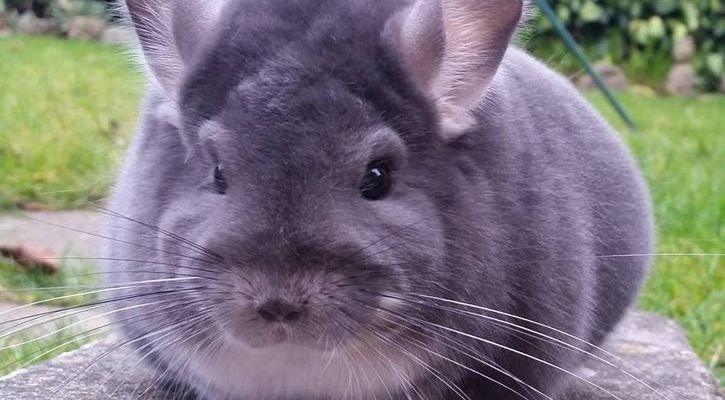
Violet chinchillas are not just another pretty face; they possess a blend of characteristics that make them intriguing companions. From their soft fur to their lively nature, understanding their appearance, traits, and temperament can help you decide if a violet chinchilla is the right pet for you. Get comfortable, grab a coffee, and let’s explore these fascinating creatures!
Understanding the Violet Chinchilla’s Appearance
When we talk about the appearance of a violet chinchilla, it’s hard not to get a little excited. These chinchillas have a unique coat color that sets them apart from the more common gray chinchilla. The violet hue is a soft, muted shade that can range from light lavender to a deeper, almost slate-like color, giving them an elegant look.
Their fur is incredibly dense—so much so that they have one of the softest furs in the animal kingdom! If you’ve ever touched a chinchilla, you might have felt like you were petting the clouds. This softness comes from their fur being made up of a higher number of hair strands per square inch than most mammals. You might be wondering how this affects their care. Well, chinchillas need specific baths using volcanic ash to keep that fur shiny and clean. Traditional water baths can harm their delicate skin.
Another striking feature of violet chinchillas is their adorable round ears and large, bright eyes. These features aren’t just for show; they help the chinchilla navigate its environment. Their ears are extremely sensitive, allowing them to hear well, which is handy since they are prey animals in the wild. With all these attributes, you can easily see why anyone would find themselves charmed by violet chinchillas.
Personality Traits of Violet Chinchillas
Violet chinchillas, like their cousins, are known for their lively, quirky personalities. They can be quite playful and curious, engaging in antics that can keep you entertained for hours. Imagine watching your chinchilla bounce around its cage, hopping from one raised platform to another, or digging through its bedding as if searching for hidden treasure.
But let’s not sugarcoat it: they can also be shy and a bit skittish. If you’re introducing a new violet chinchilla into your home, it might take some time for them to warm up to you. This is perfectly normal! It’s essential to create a comfortable environment where they can feel safe. Gradually spending time with them and allowing them to come to you on their terms will build trust in no time.
You might also notice that violet chinchillas can be social creatures, especially if you have more than one. However, they’re also prone to being territorial—so, if you’re thinking of introducing multiple chinchillas, it’s best to do so slowly and carefully. Here’s the thing: each chinchilla has its unique personality, and while most may share common traits, you’ll find that every violet chinchilla has its quirks.
Temperament: The Heart of the Violet Chinchilla
The temperament of a violet chinchilla can greatly influence how you interact with them. Generally, these little furballs tend to have a calm nature, making them loving and docile companions. When they feel secure, they show their true color—playfulness, curiosity, and even affection.
While they might seem timid at first, patience is key. Once they start to trust you, they can become quite affectionate. Chinchillas can even learn to recognize their owners and may approach you for treats or even a gentle pet. Just imagine a tiny, violet-gray ball of fluff scurrying toward you, excited for some bonding time!
It’s important to note that, like many pets, violet chinchillas have specific needs that influence their temperament. They thrive in environments where they can explore and exercise. Providing them with enough space and opportunities to play is crucial to their happiness. If they’re cooped up in a small cage for too long, their mood can take a hit.
Feeding Your Violet Chinchilla
When it comes to keeping your violet chinchilla healthy, diet plays a pivotal role. Chinchillas are herbivores, which means they primarily eat plant-based foods. The staple of their diet should be high-quality hay, like timothy or orchard grass. You might think, “Hay? Really?” But trust me, it’s essential for their digestion and keeps their teeth from growing too long—a common issue with chinchillas.
In addition to hay, you can offer them specialized pelleted food designed for chinchillas. Look for a blend that incorporates vitamins and minerals to keep them healthy. You might also want to introduce some occasional treats, such as small pieces of dried fruit or veggies, but be careful—too many treats can lead to weight gain or digestive problems.
One important aspect is to always provide fresh water. Chinchillas are sensitive to dehydration, and you should check their water supply daily. A water bottle with a sipper tube is often the easiest way to ensure they have access to clean water at all times.
Housing and Environment for Violet Chinchillas
Creating a comfortable environment for your violet chinchilla is super important. They need a spacious cage with multiple levels to climb and explore, as they love to jump around. Look for a cage with horizontal bars for climbing and various platforms where they can perch. The bigger, the better!
Bedding is another consideration. You’ll want to use materials that are safe and absorbent, such as aspen shavings or paper-based bedding. Stay away from cedar or pine shavings, as they can be harmful to chinchillas. Keep their space clean; regular spot cleaning will help maintain their health and happiness.
Additionally, chinchillas enjoy having toys to nibble on and chew. You might find wooden blocks, tunnels, or even hammocks. Not only do these toys provide entertainment, but they also keep their teeth healthy. Remember, a happy chinchilla in a well-set-up environment is a joy to be around!
Grooming and Care for Violet Chinchillas
Grooming your violet chinchilla might sound like a daunting task, but it’s quite simple! One of the biggest advantages is that chinchillas groom themselves pretty well. Their dense fur prevents moisture from penetrating, so bathing them with water is not recommended. Instead, they require dust baths with volcanic ash or baking soda.
You might wonder, “How do I give them a dust bath?” Just provide a small container filled with the dust, and let them roll around for about 10-15 minutes a few times a week. You’ll enjoy watching them dive in, kicking their feet in the air, as they have their little spa day.
Regularly checking their ears, eyes, and feet is also part of good care. Chin chinchillas typically maintain good hygiene, but it’s always a good idea to ensure there are no signs of irritation or infection.
Oh, and don’t forget about their teeth! Chinchillas need to chew to keep their teeth from growing too long. Providing chew toys and safe branches is a great way to help with this.
Common Health Issues and Prevention
Like any pet, violet chinchillas can face health issues, so being aware of potential problems is crucial. One common concern is dental problems, which can arise from not having enough chewable items. Signs of dental issues include drooling or difficulty eating, so keeping an eye on their chewing habits is important.
Gastrointestinal issues can also occur. If your chinchilla shows unusual behavior, like excessive lethargy, not eating, or changes in poop, it could be a sign of a problem. Prompt veterinary care is needed in these situations.
Prevention is key! Regular check-ups with a veterinarian experienced with chinchillas can help catch issues early. Make sure you have a good diet, a safe living environment, and plenty of opportunities for exercise to keep your violet chinchilla healthy and happy.
So, you’ve learned a lot about violet chinchillas! Their stunning appearance, unique temperament, and adorable personalities make them wonderful companions. But they also come with specific needs and responsibilities. Before bringing one home, consider whether you can create an environment that meets their requirements for space, care, and social interaction.
If you’re ready for a furry friend that can bring joy and quirks into your life, a violet chinchilla could be the perfect match. Remember, patience and understanding go a long way. With the right love and care, your bond with your violet chinchilla will be truly special. So, are you ready to welcome one of these enchanting creatures into your home?

